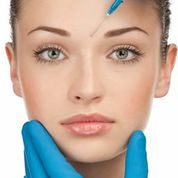 Facial injectables are some of the most popular products in the facial rejuvenation category. BOTOX is one of the recognized brand names globally. As the name suggests, facial injectables are applied via needle injection. There are three basic categories of facial injectables, dermal fillers, volumizers and neuromodulators. Dermal fillers are generally used to reduce wrinkles by plumping up the skin with a small amount of hyaluronic acid or collagen. These products are especially effective for treating fine lines and wrinkles. Some examples of popular dermal filler products are Juvéderm, Perlane and Restylane.
Facial injectables are some of the most popular products in the facial rejuvenation category. BOTOX is one of the recognized brand names globally. As the name suggests, facial injectables are applied via needle injection. There are three basic categories of facial injectables, dermal fillers, volumizers and neuromodulators. Dermal fillers are generally used to reduce wrinkles by plumping up the skin with a small amount of hyaluronic acid or collagen. These products are especially effective for treating fine lines and wrinkles. Some examples of popular dermal filler products are Juvéderm, Perlane and Restylane.
As we age, we gradually lose some of the fat in our face, which can give us sunken features and make us look old and tired. Volumizers address this by replacing lost volume, thus filling out the face to regain a more youthful appearance. Calcium hydroxylapatite and poly L-lactic acid are commonly used in these types of injectables. Two common brand names are Radiesse and Sculptra.
Neuromodulators are very different and work by paralyzing the muscles just beneath the skin (in actuality they block the nerve signals going to the muscle, which is where they get their name) that can cause forehead wrinkles or a furrowed brow look. These injectables are derived from botulinum toxin and are available as the brand names Dysport, Xeomin and of course, BOTOX. Neuromodulators are, by a huge margin, the most popular and well-known worldwide.
As previously mentioned, BOTOX is one of the most recognized brand names on the planet. The popularity of it’s use, and the ever-increasing social acceptability of all facial injectables have rapidly risen in the last two decades. The injection of BOTOX or other nueromodulators, especially in the forehead area, is the most popular aesthetic procedure in the world, with over 3 million of these procedures performed worldwide in 2012 alone. For this reason, BOTOX has been referred to at times as a “gateway drug” in medical aesthetics. Patients who come in for their first neuromodulator treatment are usually very pleased with the results, and over time this customer satisfaction and new comfort level with aesthetic procedures often leads to the patient inquiring about additional procedures they receive. Many credit the overall rise in cosmetic procedures and their social acceptability, at least in part, to the runaway success of BOTOX and other neuromodulators.
